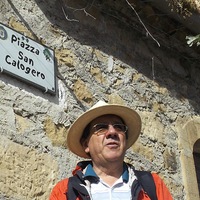Research Interests:
Archeological evidence suggests that the iconographic and technological developments that took place in the highlands around Lake Titicaca in the Central Andean region had an influence on the cultural elaborations of the human groups in... more
Archeological evidence suggests that the iconographic and technological developments that took place in the highlands around Lake Titicaca in the Central Andean region had an influence on the cultural elaborations of the human groups in the valleys and the Pacific coast of northern Chile. In a previous communication, we were able to show, by means of a distance analysis, that a craniofacial differentiation accompanied the process of cultural evolution in the valleys (Rothhammer and Santoro [2001] Lat. Am. Antiq. 12:59–66). Recently, numerous South Amerindian mtDNA studies were published, and more accurate molecular techniques to study ancient mtDNA are available. In view of these recent developments, we decided 1) to study chronological changes of ancient mtDNA haplogroup frequencies in the nearby Lluta, Azapa, and Camarones Valleys, 2) to identify microevolutionary forces responsible for such changes, and 3) to compare ancient mtDNA haplogroup frequencies with previous data in order to validate craniometrical results and to reconstruct the biological history of the prehistoric valley groups in the context of their interaction with culturally more developed highland populations. From a total of 97 samples from 83 individuals, 68 samples (61 individuals) yielded amplifications for the fragments that harbor classical mtDNA markers. The haplogroup distribution among the total sample was as follows: 26.2%, haplogroup A; 34.4%, haplogroup B; 14.8%, haplogroup C; 3.3%, haplogroup D; and 21.3%, other haplogroups. Haplogroup B tended to increase, and haplogroup A to decrease during a 3,900-year time interval. The sequence data are congruent with the haplogroup analysis. In fact, the sequencing of hypervariable region I of 30 prehistoric individuals revealed 43 polymorphic sites. Sequence alignment and subsequent phylogenetic tree construction showed two major clusters associated with the most common restriction haplogroups. Individuals belonging to haplogroups C and D tended to cluster together with nonclassical lineages. Am J Phys Anthropol, 2004. © 2004 Wiley-Liss, Inc.
